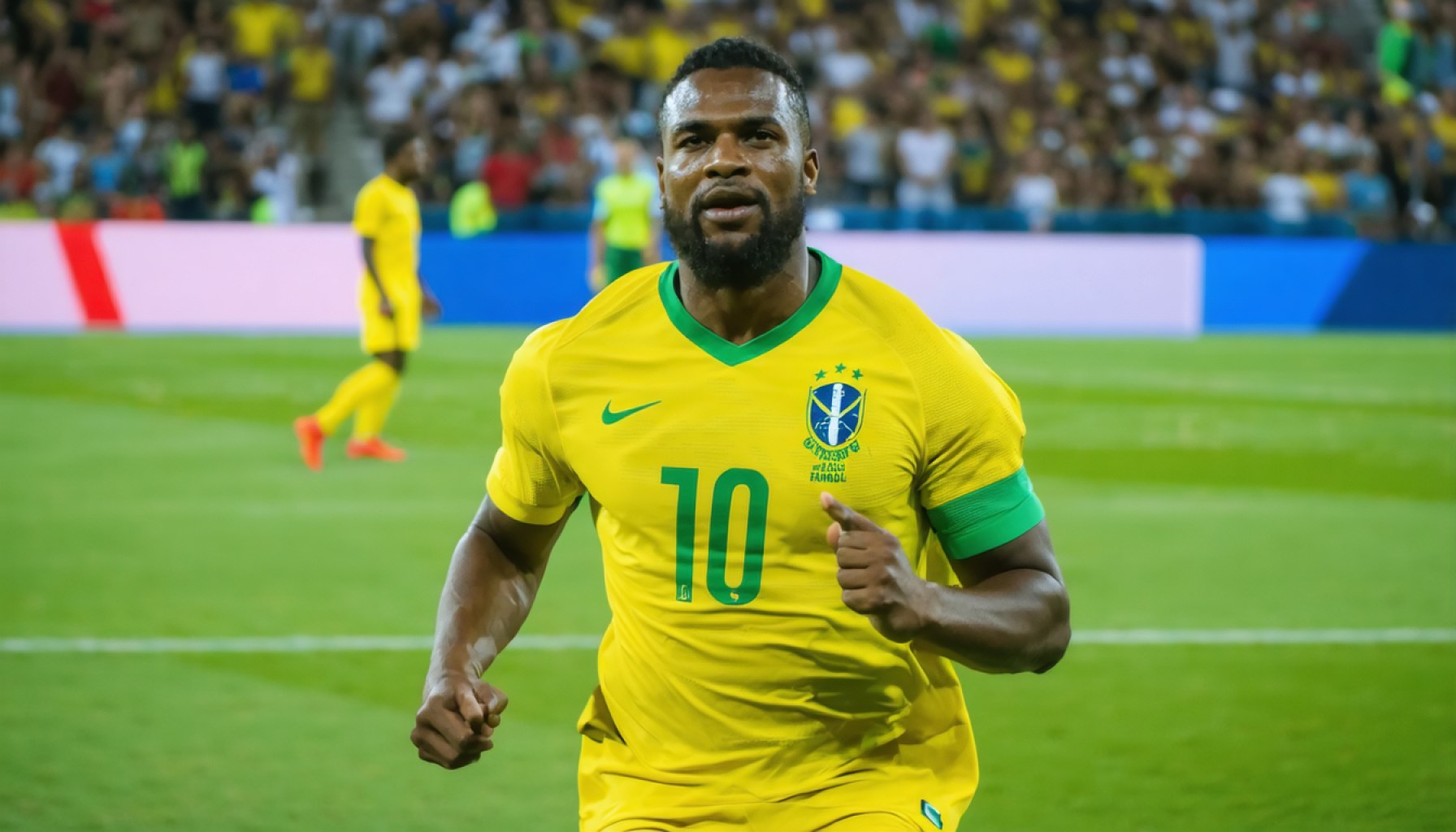- Brazil triumphed 2-1 over Colombia in a South American World Cup qualifier, spotlighting an intriguing rule twist.
- An unexpected seventh substitution by Brazil, utilizing FIFA’s concussion protocol, allowed Léo Ortiz to enter late in the game.
- A clash involving Alisson and Davinson Sánchez initiated the protocol, permitting extra changes for player safety.
- Coach Dorival Júnior capitalized on the rule, showcasing strategic savvy through multiple tactical substitutions.
- Colombia, although entitled to extra swaps, opted for only four substitutions, reflecting conscious tactical decisions.
- This match underlines modern soccer’s balance between player welfare and strategic ingenuity.
- The evolving rules highlight the sport’s commitment to ensuring player safety and enhancing competitive dynamics.
Emerging from yet another gripping night of South American World Cup qualifiers, Brazil’s 2-1 victory over Colombia was far from just a display of athletic prowess— it turned heads with an unexpected twist in the game’s rules. Imagine the scene: the 90th minute ticks by, and Léo Ortiz strides onto the field, replacing Vinícius Júnior. The Brazilian fans, used to a maximum of five substitutions, found themselves counting a mystifying seventh swap orchestrated by coach Dorival Júnior.
But what seemed like magic was actually just a well-executed maneuver in line with FIFA’s concussion substitution protocol. The explanation, though simple, is crucial to understanding the dynamics of modern-day soccer— a sport that holds both physical endurance and player welfare in equal footing.
Earlier in the match, a tense clash of heads between Alisson and Davinson Sánchez halted the game, creating a ripple of concern in the stands. The collision, occurring in the second half, was more than just a momentary pause; it invoked protocols designed to safeguard players from the long-term effects of concussions. This protocol permits teams to make an additional substitution for every player withdrawn due to a suspected concussion. So when Alisson was substituted, not only did he get replaced, but Brazil earned the right to make another change.
Coach Dorival Júnior, ever aware, seized the opportunity. The vibrant symphony of Brazil’s strategy unfolded with:
– 28′: Gerson stepped out for Joelinton.
– 60′: João Pedro made way for Matheus Cunha.
– 77′: Alisson’s departure brought Bento onto the pitch.
– 78′: André took over from Bruno Guimarães.
– 78′: Rodrygo yielded to Savinho’s fresh legs.
– 79′: Vanderson exited, inviting Wesley França’s energy.
– 90′: Vinícius Júnior paved the way for Léo Ortiz.
Meanwhile, Colombia, despite gaining the same privilege, chose to make only four changes, displaying their own tactical considerations. This episode in Belo Horizonte was a reminder of the ever-evolving nature of soccer, where sharp minds and swift adaptations can change the course of a game.
As these matches continue to captivate, they teach us an invaluable lesson about the beauty of sportsmanship interwoven with rules designed to promote fairness and safety. So the next time a match unfolds with unexpected turns, it’s worth appreciating the intricate layers of strategy at play. After all, in the dynamic world of international football, it’s as much about the brains as it is about the brawn.
Unlocking the Drama: How Brazil’s Sixth Substitute Impacted World Cup Qualifiers
Deep Dive into Substitution Rules and Strategy
Brazil’s recent 2-1 triumph over Colombia in the South American World Cup qualifiers became memorable not only for the win but for its fascinating use of substitution protocols. When Léo Ortiz entered the pitch, marking Brazil’s seventh substitution, it exemplified a nuanced aspect of modern soccer.
The Concussion Substitution Protocol Explained
In 2021, FIFA adopted concussion substitution rules to prioritize player health and safety. These rules allow teams an additional substitution if a player is suspected of sustaining a concussion, regardless of whether the maximum number of substitutions has been reached. Shortly after the collision between Brazil’s goalkeeper Alisson and Colombia’s Davinson Sánchez, Alisson was removed as a precautionary measure. This smart adherence to protocol showed that soccer has shifted towards valuing player welfare alongside competition.
Key Learnings and Questions
Why Are Concussion Protocols Important?
Concussions have long-term impacts on athletes, including cognitive impairments and increased risk of conditions like Chronic Traumatic Encephalopathy (CTE). These protocols aim to prevent these outcomes by addressing injuries immediately—demonstrating FIFA’s commitment to evolving with medical insights.
How Do These Strategies Impact Game Dynamics?
Coaches like Dorival Júnior now have tactical flexibility, allowing them to adapt swiftly to changing dynamics without compromising player safety. This creates new dimensions to gameplay, enriching the sport’s strategic layer.
Opportunities and Considerations
Real-World Use Cases in Soccer Strategy
Coaches can leverage these additional substitutions not just as a necessity but as a tactical advantage. Understanding when to utilize these opportunities could differentiate between winning and losing tight matches.
Market Trends in Sports Health
The sports industry is seeing a surge in technologies and practices focused on athlete health. Wearable tech that monitors head impact is becoming invaluable, showing broader industry trends towards integrating health-focused innovations.
Controversies and Limitations
While beneficial, the concussion substitution rule raises debates about its abuse potential—teams could exploit this rule to gain competitive advantages. Strict oversight and transparent regulations are needed.
Practical Tips for Coaches
1. Stay Updated: Regularly review and practice concussion management and substitution protocols.
2. Health Prioritization: Always prioritize the health of players over tactical advantages. Long-term benefits outweigh immediate game-day tactics.
3. Leverage Tech: Incorporate health-monitoring technologies to track player performance and risks in real-time.
Conclusion: Future of Soccer Strategy
As the sport continues to integrate health protocols into its core strategy, the beauty of soccer lies in its complexity—balancing player welfare with competitive fervor. Future coaches must blend strategic acumen with genuine concern for athletes, crafting the new age of soccer where safety and brilliance coalesce.
For further reading and soccer-related updates, check out FIFA.
